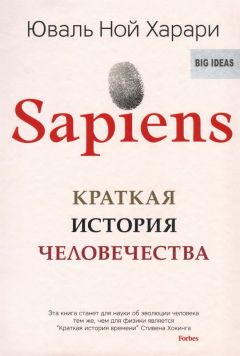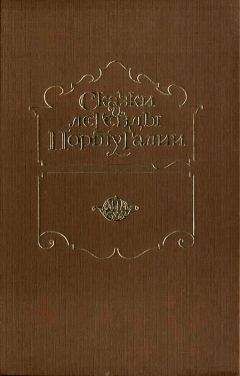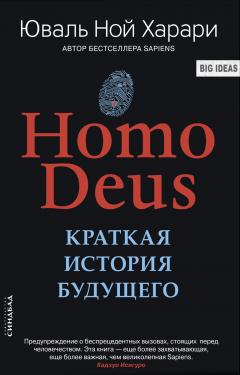87
Vinita Damodaran, ‘Famine in Bengal: A Comparison of the 1770 Famrtne in Bengal and the 1897 Famine in Chotanagpur’, The Medieval History Journal 10: 1-2 (2007), 151.
Maddison, World Economy, vol. 1, 261, 264; ‘Gross National Income Per Capita 2009, Atlas Method and PPP’, The World Bank, accessed December 10, 2010, http://siteresources.worldbank.org/DATASTATISTICS/Resources/GNIPC.pdf.
Этот пример с пекарней не слишком точен по расчетам. Поскольку банк вправе одалживать $10 на каждый имеющийся у него $1, банки могут выдавать предпринимателям по $909 тысяч из миллиона, резервируя $91 тысячу. Но, чтобы облегчить жизнь читателям, я предпочел круглые числа. Тем более банки не так уж и строго придерживаются этих правил.
Carl Trocki, Opium, Empire and the Global Political Economy (New York: Routledge, 1999), 91.
Georges Nzongola-Ntalaja, The Congo from Leopold to Kabila: A Peoples History (London: Zed Books, 2002), 22.
Mark, Origins of the Modern World, 109.
Nathan S. Lewis and Daniel G. Nocera, ‘Powering the Planet: Chemical Challenges in Solar Energy Utilization, Proceedings of the National Academy of Sciences 103:43 (2006), 15731.
Kazuhisa Miyamoto (ed.), ‘Renewable Biological Systems for Alternative Sustainable Energy Production, FAO Agricultural Services Bulletin 128 (Osaka: Osaka University, 1997), chapter 2.1.1, accessed December 10, 2010, http://www.fao.org/docrep/W7241E/w7241e06.ht m#2.1.1percent20solarpercent20energy; James Barber, ‘Biological Solar Energy’, Philosophical Transactions of the Royal Society A 365:1853 (2007), 1007
‘International Energy Outlook 2010’, U.S. Energy Information Administration, 9, accessed December 10,2010, http://www.eia.doe.gov/oiaf/ ieo/pdf/0484(2010).pdf.
S. Venetsky, ‘"Silver" from Clay’, Metallurgist 13:7 (1969), 451; Aftalion, Fred, A History of the International Chemical Industry (Philadelphia: University of Pennsylvania Press, 1991), 64; A. J. Downs, Chemistry of Aluminum, Gallium, Indium and Thallium (Glasgow: Blackie Academic & Professional, 1993), 15.
Jan Willem Erisman et al, ‘How a Century of Ammonia Synthesis Changed the World’ in Nature Geoscience 1 (2008), 637.
G. J. Benson and В. E. Rollin (eds.), The Well-Being of Farm Animals: Challenges and Solutions (Ames, LA: Blackwell, 2004); M .C. Appleby, J. A. Mench, and B. O. Hughes, Poultry Behaviour and Welfare (Wallingford: CABI Publishing, 2004); J. Webster, Animal Welfare: Limping Towards Eden (Oxford: Blackwell Publishing, 2005); C. Druce and P. Lymbery, Outlawed in Europe: How America Is Falling Behind Europe in Farm Animal Welfare (New York: Archimedean Press, 2002).
Harry Harlow and Robert Zimmermann, ‘Affectional Responses in the Infant Monkey’, Science 130: 3373 (1959), 421-432; Harry Harlow, ‘The Nature of Love’, American Psychologist 13 (1958), 673-685; Laurens D. Young et al., ‘Early stress and later response to seprate in rhesus monkeys’, American Journal of Psychiatry 130:4 (1973), 400-405; K. D. Broad, J. P. Curley and E. B. Keverne, ‘Mother-infant bonding and the evolution of mammalian social relationships’, Philosophical Transactions of the Royal Soceity В 361:1476 (2006), 2199-2214; Florent Pittet et al., ‘Effects of maternal experience on fearfulness and maternal behaviour in a precocial bird’, Animal Behavior (March 2013), In Press-available online at: http://www.sciehcedirect.com/ science/article/pii/S0003347213000547.
"National Institute of Food and Agriculture", United States Department of Agriculture, accessed December 10,2010, http://www.csrees.usda. gov/qlinks/extension.html.
Vaclav Smil, The Earths Biosphere: Evolution Dynamics, and Change (Cambridge, Mass.: MIT Press, 2002); Sarah Catherine Walpole et al., ‘The Weight of Nations: An Estimation of Adult Human Biomass’, BMC Public Health 12:439 (2012), http://www.biomedcentral. com/1471-2458/12/439.
William T. Jackman, The Development of Transportation in Modern England (London: Frank Cass & со., 1966), 324-327; H. J. Dyos and D.H. Aldcroft, British Transport — An economic survey from the seventeenth century to the twentieth (Leicester: Leicester University Press, 1969), 124-131; Wolfgang Schivelbusch, The Railway Journey: The Industrialization of Time and Space in the 19th Century (Berkeley: Univeristy of California Press, 1986).
Подробное обсуждение беспрецедентного мира последних десятилетий см. в особенности Steven Pinker, The Better Angels of Our Nature: Why Violence Has Declined (New York: Viking, 2011); Joshua S. Goldstein, Winning the War on War: The Decline of Armed Conflict Worldwide (New York, N.Y.: Dutton, 2011); Gat, War in Human Civilization.
‘World Report on Violence and Health: Summary, Geneva 2002’, World Health Organization, accessed December 10,2010, http://www.who. int/whr/2001/en/whr0 l_annex_en.pdf. Уровень смертности в прежние эпохи см. Lawrence Н. Keeley, War before Civilization: The Myth of the Peaceful Savage (New York: Oxford University Press, 1996).
‘World Health Report, 2004’, World Health Organization, 124, accessed 10 December, 2010, http://www. who.int/whr/2004/en/report04_en.pdf.
Raymond C. Kelly, Warless Societies and the Origin of War (Ann Arbjjr: University of Michigan Press, 2000), 21. See also Gat, War in Human Civilization, 129-131; Keeley, War before Civilization.
Manuel Eisner, ‘Modernization, Self-Control and Lethal Violence’, British Journal of Criminology 41:4 (2001), 618-638; Manuel Eisner, ‘Long- Term Historical Trends in Violent Crime’, Crime and Justice: A Review of Research 30 (2003), 83-142; ‘World Report on Violence and Health: Summary, Geneva 2002’, World Health Organization, accessed December 10, 2010, http://www.who.int/whr/2001/en/whr01_annex_en.pdf; ‘World Health Report, 2004’, World Health Organization, 124, accessed 10 December, 2010, http://www. who.int/whr/2004/en/report04_en.pdf.
Napoleon Chagnon, Yanomamo: The Fierce People (New York: Holt, Rinehart and Winston, 1968); Keeley, War before Civilization.
О психологии и биохимии счастья полезно почитать: Jonathan Haidt, The Happiness Hypothesis: Finding Modern Truth in Ancient Wisdom (New York: Basic Books, 2006); R. Wright, The Moral Animal: Evolutionary Psychology and Everyday Life (New York: Vintage Books, 1994); M. Csikszentmihalyi, ‘If We Are So Rich, Why Aren’t We Happy?’, American Psychologist 54:10 (1999): 821-827; F. A. Huppert, N. Baylis and B. Keverne, ed., The Science of Well-Being (Oxford: Oxford University Press, 2005); Michael Argyle, The Psychology of Happiness, 2nd edition (New York: Routledge, 2001); Ed Diener (ed.), Assessing Well-Being: The Collected Works of Ed Diener (New York: Springer, 2009); Michael Eid and Randy J. Larsen (eds.)> The Science of Subjective Well-Being (New York: Guilford Press, 2008); Richard A. Easterlin (ed.), Happiness in Economics (Cheltenham: Edward Elgar Pub., 2002); Richard Layard, Happiness: Lessons from a New Science (New York: Penguin, 2005).
Kahneman et al., “A Survey Method for Characterizing Daily Life experience: The Day Reconstruction Method”, Science 3 (2004): 1776-1780; Inglehart et al., "Development, Freedom, and Rising Happiness," 278-281.
D. M. McMahon, The Pursuit of Happiness: A History from the Greeks to the Present (London: Allen Lane, 2006).
Keith T. Paige et al., ‘De Novo Cartilage Generation Using Calcium Alginate-Chondrocyte Constructs’, Plastic and Reconstructive Surgery 97:1 (1996), 168-78.
David Biello, ‘Bacteria Transformed into Biofuels Refineries’, Scientific American, January 27, 2010, accessed December 10, 2010, http://www.scientificamerican.com/article.cfm?id=bacteria- transformed-into-biofuel-refineries.
Gary Walsh, ‘Therapeutic Insulins and Their Large-Scale Manufacture’, Applied Microbiology and Biotechnology 67:2 (2005), 151-159.
James G. Wallis et al., ‘Expression of a Synthetic Antifreeze Protein in Potato Reduces Electrolyte Release at Freezing Temperatures’, Plant Molecular Biology 35:3 (1997), 323-330.
Robert J. Wall et al., ‘Genetically Enhanced Cows Resist Intramammary Staphylococcus Aureus Infection, Nature Biotechnology 23:4 (2005), 445-451.
Liangxue Lai et al., ‘Generation of Cloned Transgenic Pigs Rich in Omega-3 Fatty Acids’, Nature Biotechnology 24:4 (2006), 435-436.
Ya-Ping Tang et al., ‘Genetic Enhancement of Learning and Memory in Mice’, Nature 401 (1999), 63-69.
Zoe R. Donaldson and Larry J. Young, ‘Oxytocin, Vasopressin, and the Neurogenetics of Sociality’, Science 322:5903 (2008), 900-904; Zoe R. Donaldson, ‘Production of Germline Transgenic Prairie Voles (Microtus Ochrogaster) Using Lentiviral Vectors’, Biology of Reproduction 81:6 (2009), 1189-1195.
Terri Pous, ‘Siberian Discovery Could Bring Scientists Closer to Cloning Woolly Mammoth’, Time, September 17, 2012, accessed February 19, 2013; Pasqualino Loi et al, ‘Biological time machines: a realistic approach for cloning an extinct mammal’, Endangered Species Research 14 (2011), 227-233; Leon Huynen, Craig D. Millar and David M. Lambert, ‘Resurrecting ancient animal genomes: The extinct moa and more, Bioessays 34 (2012), 661-669.
Nicholas Wade, ‘Scientists in Germany Draft Neanderthal Genome’, New York Times, February 12,2009, accessed December 10,2010, http://www. nytimes.com/2009/02/13/science/13neanderthal.html?_r=2&ref=science; Zack Zorich, ‘Should We Clone Neanderthals?’, Archaeology 63:2 (2009), accessed 10 December, 2010, http://www.archaeology.org/1003/etc/ neanderthals.html.
Robert H. Waterston et al., ‘Initial Sequencing and Comparative Analysis of the Mouse Genome’, Nature 420:6915 (2002), 520.
‘Hybrid Insect Micro Electromechanical Systems (HI-MEMS)’, Microsystems Technology Office, DARPA, accessed March 22, 2012, http://www.darpa.mil/Our_Work/MTO/Programs/Hybrid_Insect_ Micro_Electromechanical_Systems_percent28HI-MEMSpercent29.aspx. See also: Sally Adee, ‘Nuclear-Powered Transponder for Cyborg Insect’, IEEE Spectrumy December 2009, accessed December 10, 2010, http:// spectrum.ieee.org/semiconductors/devices/nuclearpowered-transponder- for-cyborg-insect?utm_source=feedburner&utm_medium=feed&utm_ campaign=Feedpercent3A+IeeeSpectrum+percent28IEEE+Spectrumpe rcent29&utm_content=Google+Reader; Jessica Marshall, ‘The Fly Who Bugged Me’, New Scientist 197:2646 (2008), 40-43; Emily Singer, ‘Send In the Rescue Rats’, New Scientist 183:2466 (2004), 21-22; Susan Brown, ‘Stealth Sharks to Patrol the High Seas’, New Scientist 189:2541 (2006), 30-31.
Bill Christensen, ‘Military Plans Cyborg Sharks’, Live Science, March 7, 2006, accessed December 10, 2010, http://www.livescience.com/ technology/060307_shark_implant.html.



